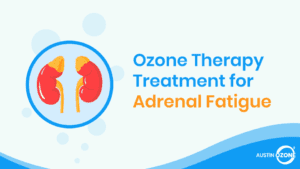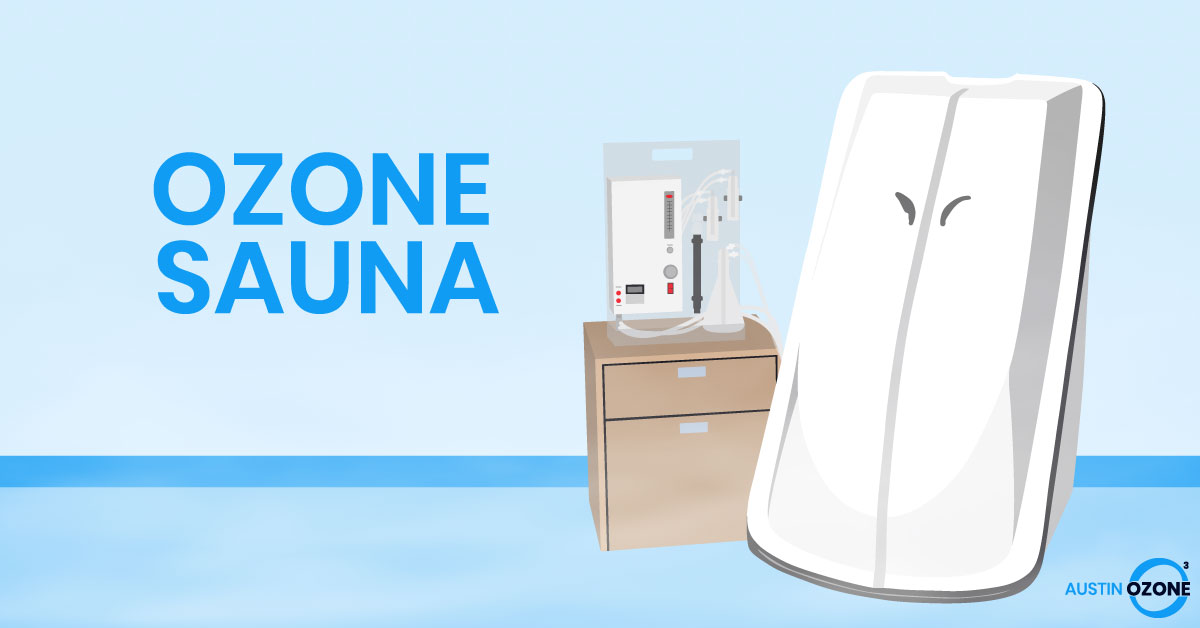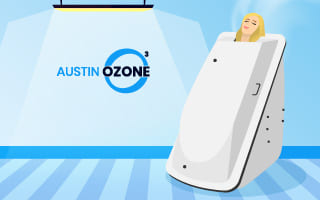Administration of Medical Ozone
There is no doubt that ozone is very toxic to the respiratory tract, because respiratory tract lining fluids have little protective capacity from ozone. Ozone, however, has come to be emphasized as the major cause of lung damage due to air pollutants even though other air pollutants such as sulphur and nitrous oxides do far more damage than ozone. This is because atmospheric ozone concentration, being very easy to measure, has become the standard measure by which we monitor air pollution.
The World Health Organization states that it is permissible to work for 8 hours in an ozone concentration of 0.6 ppm (120mcg/cubic meter or 0.12 mcg/litre). There is a wealth of literature available on the health hazards of ozone, but almost every reference refers to the toxic effects of ozone on the respiratory system.
The following is a summary of the toxic effects of ozone in humans according to Dr Bocci. At 0.1ppm lachrymation and irritation of upper respiratory airways occurs. At 1.0-2.0 ppm we see rhinitis, cough, headache, occasionally nausea and retching. From 2.0-5.0ppm for 10 to 20 minutes of exposure (inhalation) progressively increasing dyspnoea, bronchial spasm and retrosternal pain occur. Breathing 5.0 ppm (0.01 gamma) for 60 minutes causes acute pulmonary edema and occasionally respiratory paralysis. Breathing 10ppm (0.02 gamma) for four hours will result in death. Breathing 50ppm (0.1 gamma) ozone will cause death in minutes.
Frank Shallenberger, M.D., a pioneer in the use of medical ozone in America, states that one must inhale an ozone concentration of 20 gamma for over one minute to cause permanent lung damage. Just one breath or even a sniff of 20 gamma ozone will lead to severe coughing spasms. More than one inhalation is physically impossible, let alone a 60 second exposure.
Our ozone perception level (the concentration at which we can smell it) is 0.02mg/cubic meter = 0.02mcg/l or 0.0002mcg/ml (gamma) or 0.1ppm. The average therapeutic concentration of medical ozone used in treatments is 37gamma or 37 mcg/ml. It is obvious that medical ozone treatments must be carried out in a well vented facility.
The bottom line is that as long as administration of medical ozone is performed according to guidelines, it is one of the safest modalities in medicine.
The benefits of a steam sauna on the immune system and disease processes have been well documented. In addition to being relaxing and soothing, a sauna and the accompanying induced hyperthermia on the body, mimics the beneficial effects of a fever, without the discomfort. At 104 degrees F., for example, the growth rate of the polio virus is reduced up to 250 times; at 106 degrees pneumococcus, a bacterium responsible for pneumonia dies.
Although the effects of this artificial method of increasing the body temperature are not as comprehensive as a natural fever, there are definite system wide effects. There is evidence that artificial fever works as an immune system stimulant by increasing the number of white blood cells in the body. In a 1959-review of studies on the effects of heat treatments, Mayo Clinic researcher Dr. Wakim and colleagues cite findings indicating that the number of white blood cells in the blood increased by an average of 58% during artificially induced fever. Researchers also have found increases in the activity of the white blood cells during induced fever.
Apart from the immune system-stimulating effects of sweat therapy, many thought it as one of the most effective and painless detoxifying treatments available. Sweat contains almost the same elements as urine, and for this reason, the skin is sometimes called the third kidney. It is estimated that as much as 30% of bodily wastes are eliminated by way of perspiration, and during a steam sauna, the body perspires profusely.
By adding ozone into this environment, the ozone is easily absorbed into the skin and lymphatic system because of the open pores. This provides an excellent detoxifying effect and it is also reported that the effects are once again not limited to detoxification, but may induce the desirable system wide effects that is desired in the medical use of ozone: oxygenation of all the tissues, organs, and cells of the body, boosting the immune system, stimulation of the release of anti-cancer substances from the white blood cells of the immune system, enhancement of blood and oxygen delivery throughout the body.
It is very important to point out that the sauna used for this treatment is of the type where the individual’s head protrudes from the top of the sauna, and the individual is therefore not breathing the ozone / steam mixture. Concentrations used for this type of treatment are usually approximately 40ug/ml, and the ozone is introduced into the sauna at a rate of 1/4LPM.
Using the steam sauna is one of the most popular methods of taking advantage of this therapy. The steam sauna ozone system for applying ozone has many advantages:
Many individuals have found it beneficial to irrigate the ear canal with the ozone / oxygen mixture from a medical ozone generator. As with every use of ozone for medical purposes the individual must ensure: the purity of the oxygen supply, that all parts of the ozone generator in contact with the gas stream are ozone resistant (eg. kynar, Teflon, glass, silicone), and that they know the ozone output (concentration of the ozone) of the ozone generator. This is extremely important – too little ozone and there will be no effect; too much ozone and there can be irritation to the ear canal.
The patient may first apply a small amount of water to the ear canal to assist in the absorption of the ozone. The ozone must be humidified by bubbling the gas through water. The usual concentration used for this protocol is 15ug/ml – 30ug/ml. The flow rate used is usually ¼ Litre per minute or perhaps 1/8 LPM.
The output tube of the ozone generator is held up to the entrance of the ear. At no time should the tube come into proximity of the eyes, nose, or mouth. Doing so may cause discomfort. At no time should the output tube be placed inside the ear, or sealed into the entrance way of the ear. The ozone should be allowed to flow into the ear and out of the ear. Each ear is usually treated for 2-5 minutes per treatment.
Treatment schedule depends on the disease of the patient, and the effect on each individual patient. This therapy should not be performed more than once per day, and in most cases is performed 2-3 times per week.
Patients should individually modify the treatment protocol depending on their reaction. If any discomfort, redness, or “chapping” occurs, it is suggested that the patient increase the length of time between treatments, and decrease the ozone concentration coming from the ozone generator.
Many physicians have indicated that the ozone enters the lymphatic and blood system this way. Many patients have reported a wide variety of results including relief of allergies, relief of colds, clearing of sore throats and swollen glands.
A vaginal cannula is used to introduce the ozone gas to the patient. Unlike Rectal Insufflation, there is no danger of pressure buildup. The ozone concentration used is usually 25-30ug/ml, and the flow rate is usually 1/4LPM (litres per minute) or 1/8LPM. Treatment time is usually 5 – 15 minutes. The patient may lower the ozone concentration, and the duration of the treatment if any discomfort occurs. This treatment should not be performed more than once per day, and is usually only performed 2-3 times per week.
Many women have reported relief from yeast infections and various sexually transmitted diseases including herpes. Many women also use this method as an alternative to rectal insufflation as it is theorized that the ozone not only affects the pelvic region, but also enters the general circulation causing a body wide effect.
Women must not use this method close to, or during the time of menstruation as ozone at these concentrations increases blood flow.
Rectal Insufflation is “95% as effective as Major Autohemotherapy” (Renate Viebahn). This method is used by many physicians in their clinics and by those at home as well.
The ozone gas (usually at a concentration between 25ug/ml – 40ug/ml, and a flow rate of 1/8 litre per minute) is infused rectally using a urethral catheter. The procedure is usually performed following a bowel movement or a colonic treatment in order to ensure the colon is relatively free of fecal matter. The ozone enters the lower intestine, is held for at least 30 minutes, and over this period it is absorbed into the system.
The treatment is performed using the above guidelines (25-40ug/ml) if the desired effects are the immune modulation and other “system wide” effects typically desired of Ozone Therapy.
Infusing gas rectally is much like blowing up a balloon. For safety and comfort reasons the physician and patient must always ensure that only the desired volume of ozone gas is infused. A typical starting point for many users is 125cc of gas (which can be obtained if the flow rate is 1/8 litre per minute as above, and the treatment is performed for one minute). The ozone gas is infused through the catheter which is inserted into the rectum approximately 4 to 6 inches. Using the example above, the flow is then stopped within one minute, the catheter withdrawn, and the patient then holds this gas for a period of at least 30 minutes.
Dr. Michael Carpendale has shown us through studies that the ozone gas is absorbed over a period of 30-40 minutes as it is held in the body. If the ozone escapes before that time, the full benefit of the treatment has not been obtained. The gas is slowly absorbed into the body, and the “system wide” effects of ozone therapy are obtained. Most users of this method have mentioned that little or no discomfort is caused by this method, and most find they have no gas to release at the end of the 30 minute period.
The only time this technique varies is if the desired outcome of the rectal insufflation is to stop the bleeding associated with “Bleeding Colitis”. In this case, the German standards indicate that the concentration of ozone should be 60ug/ml and the amount of ozone infused should only be 60cc. This higher ozone concentration will stop the bleeding, but will not heal the colon. Therefore the goal is to first stop the bleeding with the higher concentration (60ug/ml) and once stopped, the technique above is used to heal the affected parts of the colon. The basic guidelines are that ozone at higher concentrations (60 ug/ml) are used to stop bleeding and to sterilize. After this is accomplished the ozone concentration should be lowered to the levels known to cause healing, that is, 30 – 40 ug/ml.
A recent publication encouraging a “45 minute rectal insufflation” should never be attempted. The author of this technique is under the impression that “more is better” and therefore performing an insufflation for this length of time should be preferable to the short rectal insufflation. The guidelines instruct someone to use two catheters, one deep inside the colon, and one only inserted a few inches. One catheter is used to infuse the ozone, while the other is used to allow the ozone to escape. This prevents the build up of any pressure within the colon, and allows the user to infuse ozone for as long as desired. Again, this method is assuming that ‘more is better’. Unfortunately this logic is flawed and has absolutely no scientific basis. There is no increase in benefit in using this method, and in fact, the user attempting this method runs a very clear risk of massive irritation of the sensitive tissue within the colon. Ozone in proper amounts is a wonderful healing tool, however attempting a 45 minute rectal insufflation can actually cause irritation and damage of this sensitive tissue.
One of the easiest and most pleasurable of the methods of using ozone, the body suit is both effective and relaxing. The ozone is absorbed through the skin, cleansing the lymphatic system, and reportedly inducing the body wide effects of ozone generally seen with other treatment protocols.
The patient first opens the pores of the skin by taking a warm/hot shower, after which they immediately enter the body suit. The body suit must be sealed at the ankles and wrists to reduce leaking. Usually a towel is wrapped around the neck to increase comfort and to reduce leaking around the neck. If necessary, a fan may be used to gently blow any leaking ozone away from the individual. The ozone generator is set to produce a concentration of 25 – 35ug/ml at a flow rate of 1/4LPM. The ozone must be humidified (run through water) and is introduced into the body suit.
The patient remains in the body suit for 15 – 40 minutes ( one usually starts with a 15 minute treatment and the treatment time remains that or is gradually increased depending on the desire and comfort of the individual during and after treatments). Treatment is usually individualized depending on the individual effects of the treatments and the desired effect, be it in treatment of a disease, or for general health. Individuals should be encouraged to use their own bodies and common sense as an indication of whether treatment times and concentrations should be increased or lowered. This treatment is usually performed 2-3 times per week, and never more than once per day.
Ozonated Olive Oil is used around the world for a variety of uses: acne, skin lesions, burns, fungal infections (eg. Of the toe nail), herpes, eczema, leg sores, bed sores, gingivitis, hemorrhoids, STD’s, cold sores, and many others.
This appears to be the only way to stabilize ozone without adding artificial stabilizers, chemicals, or preservatives. Ozone is bubbled at very high concentrations, under a controlled environment for days until it slowly begins to solidify. This solid form of olive oil forms a Vaseline or salve like substance and will keep for many months on the shelf. If kept refrigerated, it maintains its full effectiveness almost indefinitely.
Some individuals even choose to ingest ozonated olive oil in order to obtain the system wide effects of using ozone medically.
“Bagging” with ozone refers to the method of isolating a body part by surrounding it with a bag (such as hand, arm, leg, foot, torso, pelvis, but NEVER head), and introducing ozone. This can be used to treat gangrene, diabetic foot ulcers, bed sores, burns, any wounds that are infected or slow healing or those that refuse to heal. This method is not intended to generate an immune modulating effect on the individual as in the methods above.
The bag is placed around or over the affected area, the output tube from the ozone generator placed through the top of the bag, and the top sealed as effectively as possible. Ozone at the desired concentration must first be humidified (simply bubbled through water) and then enters the bag; the ozone generator constantly runs during this treatment. Treatment times vary depending on the type of wounds being treated but typically range from 10 – 30 minutes. As leaking will occur from the bag it is suggested that this process occurs in a well ventilated area. After the treatment the bag will still contain a high concentration of ozone, irritating to the lungs, nose, and eyes if it escapes from the bag. This is usually disposed of in a safe manner. (In European medical clinics, a specially designed bag is used to ensure no leaking occurs, and after treatment the ozone is sucked from the bag by a vacuum pump so neither the patient, nor the attendant ever breathes in the ozone).
In this method the ozone kills any bacteria, viruses, fungus, or molds infecting the open wound, increase blood flow to the wound, and stimulates the healing process. It has been documented that many a body part has been spared amputation through the application of ozone in this method.
High concentrations of ozone applied through bagging (60ug/ml – 90ug/ml) tend to have a sterilization effect on the wound, but if used for prolonged periods will have a negative effect on healing. Mid range ozone concentrations (30-40 ug/ml) will have a healing effect on the wounds. Therefore the protocol as suggested by German researchers is to begin with the infected wound at 75-90ug/ml for the sterilizing effect, and as the treatments begin to clear the wound of infection, to gradually drop the concentration towards 35ug/ml. This gradual drop in the concentration will maintain the sterility of the wound, and stimulate healing. Individual differences in this protocol are taken into account by watching the effect of the ozone on the wound, and the rate at which it closes.
This procedure for administration of medical ozone is performed only by trained professionals, usually only in a clinic setting. Approximately 200cc of the patients blood is withdrawn into an evacuated bottle. The bottle is then hung upside down, and ozone gas (the same volume as the blood withdrawn) is infused into the bottle, usually at a concentration of 40ug/ml. The blood is then given back to the patient, much like a transfusion.
In this procedure the trained professional constantly monitors the patient, and ensures the purity of the ozone gas, and the sterility of all equipment used. For the trained professional, this treatment is actually quite easy, and very safe for the patient.
Major Autohemotherapy is the preferred method of many practitioners, and it is used in well over 150 diseases. In Germany, even the ambulances are equipped with ozone generators; if ozone is administered within 24 hours of a stroke, 95% of patients suffer no permanent paralysis
Some ozone concentration conversions are given below for those wishing to calculate ozone concentration numbers in mcg/ml or gamma.
0.1ppm=0.2mg/cubic meter=0.2mcg/l=0.0002mcg/ml
Another way to state ozone concentrations is that 0.5% ozone is equal to 7 mcg/ml, 1.0% is equal to 14mcg.ml and so on up the scale.
Micrograms per milliliter or gamma, is the common unit used in determining proper treatment concentrations for administration of medical ozone. Concentrations of ozone used in therapy commonly range from 20 to 80 gamma.





